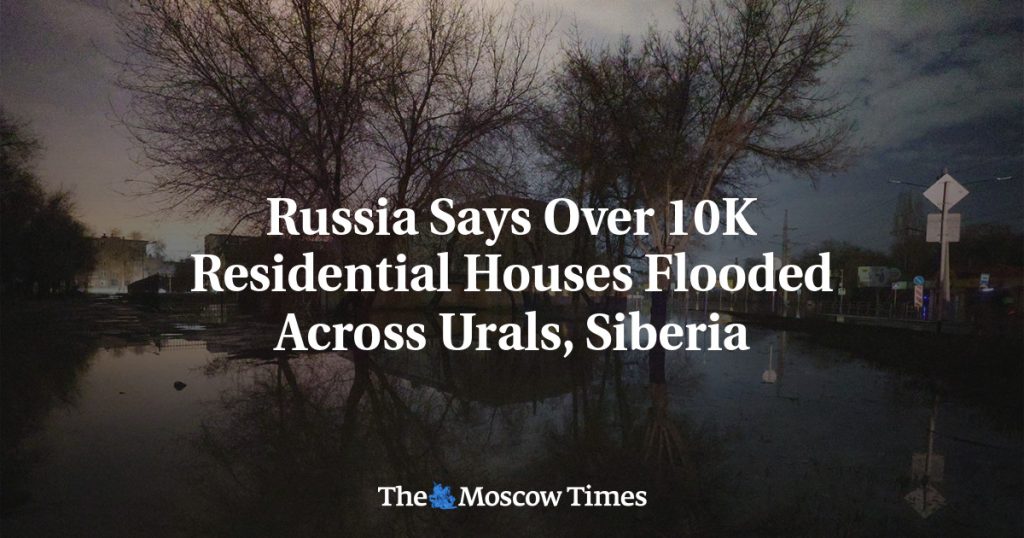Russia is currently facing severe flooding across various regions, including the Urals, the Volga region, and western Siberia. More than 10,000 residential buildings have been flooded, leading to the evacuation of cities threatened by rising rivers. A federal emergency was declared in the Orenburg region after the Ural River flooded much of the city of Orsk and began to reach dangerous levels in the main city of Orenburg. The country’s emergencies ministry warned of an increase in air temperature, active snow melting, and overflowing rivers in several regions.
Thousands of people have already been evacuated, primarily in the Orenburg region near Kazakhstan. Orsk experienced extensive flooding following torrential rain that caused a nearby dam to burst. While the Ural River in Orsk receded slightly, water levels in Orenburg continued to rise, with authorities monitoring the situation closely. The mayor of Orenburg expressed concerns that the flood could be unprecedented and urged for forced evacuations to ensure the safety of residents. The flood is expected to peak in Orenburg on Wednesday, affecting several districts within the city.
Warnings have also been issued for rising water levels in Siberian regions such as Tyumen and Kurgan, with the Tobol River expected to rise significantly. In Kurgan, authorities have initiated preventative evacuations and relocated over 500 people. The Kremlin ordered heightened alertness in Kurgan and Tyumen due to the unusual natural occurrences causing the flooding. It is crucial for emergency services and local authorities to remain vigilant and take necessary steps to protect residents and minimize the impact of the floods on communities in these regions.
The flooding in Russia is a result of a combination of factors, including rising temperatures, active snow melting, and overflowing rivers. The situation is exacerbated by the bursting of a dam near Orsk, leading to significant flooding in the area. The government’s emergency response has focused on evacuating residents from affected areas and monitoring water levels to assess the extent of the flooding. With thousands of buildings already flooded and more at risk, it is essential for authorities to coordinate efforts to provide assistance and support to those impacted by the disaster.
The severity of the flooding in Russia has prompted the government to take immediate action to safeguard the lives and property of residents in the affected regions. With water levels rising rapidly and the potential for further flooding, it is crucial for emergency services to implement evacuation plans and provide necessary resources to support those displaced by the floods. The ongoing monitoring of river levels and weather conditions will help authorities anticipate and respond to the evolving situation, minimizing the impact on communities and ensuring the safety of residents. Cooperation between local, regional, and federal agencies is essential to address the challenges posed by the widespread flooding and mitigate its effects on the population.
The Russian government’s response to the flooding crisis reflects a coordinated effort to protect citizens from the devastating impact of rising waters. By declaring a federal emergency in the Orenburg region and initiating evacuations in areas at risk, authorities are prioritizing the safety and well-being of residents facing the threat of flooding. As the situation continues to evolve, it is important for emergency services to remain proactive in their response and provide support to communities affected by the disaster. With the potential for further flooding in other regions, ongoing monitoring and preparedness efforts will be crucial in ensuring a swift and effective response to the crisis.


